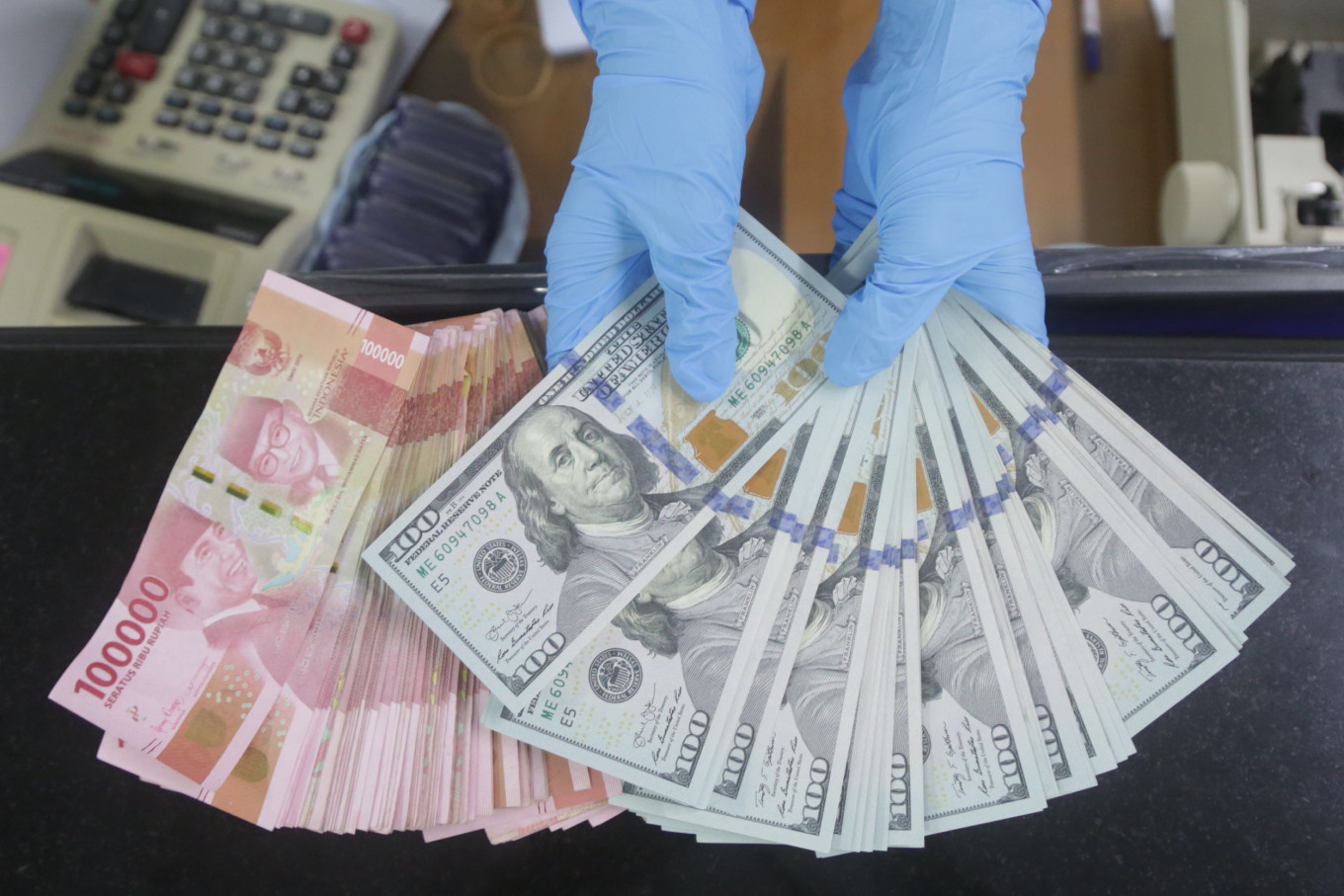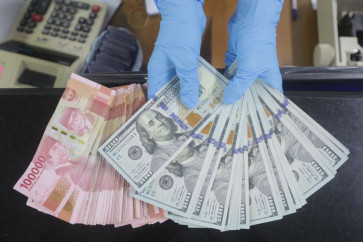Popular Reads
Top Results
Can't find what you're looking for?
View all search resultsPopular Reads
Top Results
Can't find what you're looking for?
View all search results[ANALYSIS] Rupiah to remain stable amid market volatility
While the current upward trend in the USDX is putting pressure on Asian currencies, the rupiah will remain relatively stable this year, buoyed by stronger policy synergy between the government and the central bank toward recovery.
Change text size
Gift Premium Articles
to Anyone
T
he COVID-19 pandemic has affected all sectors of the economy as well as the financial markets. High uncertainty in the money market has made investors more selective about where they place their funds. Safe haven assets are still preferred, as they can protect investments and are attractive during periods of market volatility.
Safe haven assets generally include precious metals (gold, silver), utilities stocks (the most stable stocks on the market), United States Treasury exchange traded funds (ETFs), Treasury bonds, safe haven currencies (US dollar, Japanese yen, Swiss franc) and cash.
The market’s growing interest in safe haven instruments will pressure emerging market instruments, including the rupiah. Market optimism has increased over the US dollar following rising expectations for US economic recovery even as new risks emerge in Europe, such as the increase in new COVID-19 cases resulting in a return to lockdowns.
The US dollar index (USDX) recently increased to 92.9 after briefly hovering at 89 in early January. The upward trend of the USDX indicates that the dollar is appreciating against most major currencies. The US dollar’s appreciation, accompanied by restraint in the flow of funds to regional markets, also put pressure on most Asian currencies.
Regional currencies such as the Chinese yuan, Thai baht, Malaysian ringgit and Singapore dollar recorded a downward trend through the first quarter of 2021 from the end of 2020. If we look at comparative data on currency volatility in emerging market peers, the rupiah’s volatility of 8 percent is still lower than the average volatility of 21.6 percent for the Turkish lira, Brazilian real and South African rand.
The rupiah depreciated 2.8 percent to 14,445 against the greenback at the end of the first quarter from the end of 2020. The movement of the rupiah was influenced by a combination of external and internal factors at the beginning of the year, when the currency had strengthened to 13,900 per US dollar.
As a safe haven currency, the US dollar has strengthened against major currencies, driven by hopes over the $1.9 trillion American Rescue Plan stimulus, made effective on March 17, in encouraging recovery of the US economy.


















